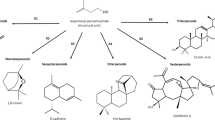Abstract
Seven solvent mixtures have been used to extract the lipid fraction of lyophilized biomass ofIsochrysis galbana. Six of them were composed of biocompatible solvents. Each method was carried out under relaxed operating conditions (i.e., one hour at room temperature) with extraction in a nitrogen atmosphere to prevent autooxidation and degradation of polyunsaturated fatty acids (PUFAs). Apart from the well-established Bligh and Dyer method [Can. J. Biochem. Physiol. 37:911 (1959)] (Cl3CH/MeOH/H2O, 1∶2∶0.8, vol/vol/vol), which rendered the highest yield of lipids (93.8%), ethanol (96%) and hexane/ethanol (96%), 1∶2.5 vol/vol produced the best results (84.4 and 79.6%, respectively). To obtain free fatty acids, KOH was added to the solvent mixtures used to extract the total lipids, except for Cl3CH/MeOH/H2O, and direct saponification was carried out at 60°C for 1 h or at room temperature for 8 h. The highest yields obtained by direct saponicification were 81% with hexane/ethanol (96%), 1∶2.5, vol/vol and 79.8% with ethanol (96%). Partial yields of the mainn-3 PUFAs found inI. galbana, stearidonic acid (SA), eicosapentaenoic acid (EPA) and docosahexaenoic acid (DHA), were calculated for both extraction methods. For lipid extraction with ethanol (96%), yields of 91, 82 and 83% were obtained for SA, EPA and DHA, respectively. When direct saponification was used, hexane/ethanol (96%; 1∶2.5, vol/vol) produced the best yields of (91, 79 and 69% for SA, EPA and DHA, respectively).
Similar content being viewed by others
References
Molina Grima, E., J.A. Sánchez Pérez, F. García Camacho, J.L. García Sánchez and D. López Alonso,Appl. Microbiol. Biotechnol. 38:599 (1993).
Bligh, E.G., and W.J. Dyer,Can. J. Biochem. Physiol. 37:911 (1959).
Nagle, N., and P. Lemke,App. Biochem. and Biotechnol. 24/25:355 (1990).
Molina Grima, E., J.A. Sánchez Pérez, J.L. García Sánchez, F. García Camacho and D. López Alonso,Process Biochemistry 27:299 (1992).
Kates, M.,Techniques of Lipidology: Isolation, Analysis and Identification of Lipids, 2nd revised edn., edited by R.H. Burdon, and P.H. van Knippenberg Elsevier Science Publishers, Amsterdam, 1986, p. 190.
Bonner, W.D.,J. Phys. Chem. 14:738 (1910).
Lepage, G., and C.C. Roy,J. Lipid Res. 25:1391 (1984).
Shantha, N.C., and G.E. Napolitano,J. Chromatog. 624:37 (1992).
Ahlgren, G., and L. Merino,Arch. Hydrobiol. 121:295 (1991).
Hara, A., and N.S. Radin,Analytical Biochem. 90:420 (1978).
Folch, J., M. Lees and G.M. Stanley,J. Biol. Chem. 226:497 (1957).
Kochert, G., inPhysiological and Biochemical Methods, edited by J. Hellebust, and S. Crage, Cambridge University Press, London, 1978, p. 189.
Gellerman, J.L., and H. Schlenk,J. Protozool. 12:178 (1965).
Author information
Authors and Affiliations
About this article
Cite this article
Grima, E.M., Medina, A.R., Giménez, A.G. et al. Comparison between extraction of lipids and fatty acids from microalgal biomass. J Am Oil Chem Soc 71, 955–959 (1994). https://doi.org/10.1007/BF02542261
Received:
Accepted:
Issue Date:
DOI: https://doi.org/10.1007/BF02542261




